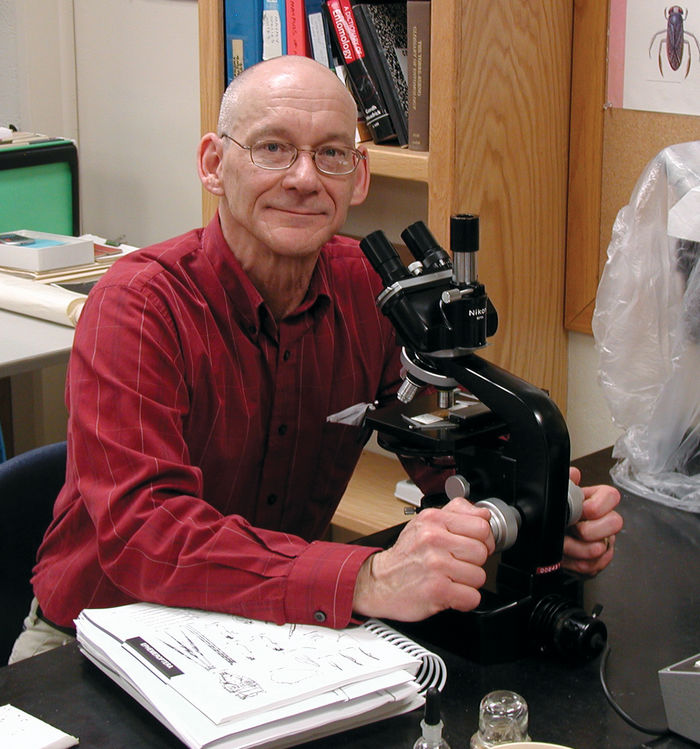As a child growing up on the bluffs overlooking Lake Erie’s Presque Isle Bay, Dr. Peter Grant ’75 delighted in chasing fireflies, plucking cicada exoskeletons from trees, and capturing the mayflies that would cling to his family’s Front Street home each summer.
“I remember waking up and seeing that there had been a mayfly hatch the night before and rushing outside to catch them,” he said. “They’re pretty slow, so they were easy to get.”
Little did he know then that those ancient winged insects would become his life’s work.
Grant, a biology graduate, was recently honored for that work with a Lifetime Achievement Award from the Committee of the International Conference on Ephemeroptera, the order to which mayflies belong.
“I was very surprised,” he said. “I still don’t believe it.”
Currently the dean of the College of Arts and Sciences and a professor of biology at Southwestern Oklahoma State University, Grant has studied mayflies for nearly four decades.
He has compiled an annual bibliography on the insect for the North American Benthological Society (now the Society for Freshwater Science) for twenty-seven years, and he founded and served as the editor of The Mayfly Newsletter for twenty-six years.
Getting his feet wet in Walnut Creek
Grant’s education and career have taken him from Pennsylvania to Texas to Florida to South Carolina to Oklahoma, but he still keeps in touch with the Behrend professor who encouraged his first research work. Dr. Ed Masteller, professor of biology emeritus, recruited Grant to participate in a summer research project in Walnut Creek after his first year at Behrend. Mayflies are part of an ancient group of insects called the Palaeoptera, which includes dragonflies and damselflies. The gossamer-winged, short-lived mayfly has never really held a candle to its zippy, flashy “cousins.” But they stand out for a few reasons.
“Mayflies are the oldest known winged insect,” Grant said. “The ancestry goes back about 300 million years, further than any currently living group of insects.” Despite the longevity and variety (there are more than 3,000 species of mayfly), the insect has a brief adult life. Few live more than a day or two as flying insects.
“They don’t even have any functional mouth parts or a digestive system,” Grant said. “They exist in their adult form simply to reproduce.”
A mayfly spends the majority of its life, up to a year or more, in its immature nymph stage as an aquatic freshwater insect. They can be found at the bottom of nearly any freshwater source—creeks, rivers, lakes—in still or running water. Turn over a few rocks in the water, and you are likely to find a mayfly on one of them.
Still hard at work
Grant balances his academic responsibilities with his research work. He’s currently involved in a long-term project cataloging the mayflies of Oklahoma as well as a study looking at the population size of endangered species of mayflies and caddisflies in the state.
Grant is happy with his lot in life.
“I’ve wanted to be a scientist since I was a kid,” he said. “Being a college professor has given me the flexibility to both teach and learn.”
